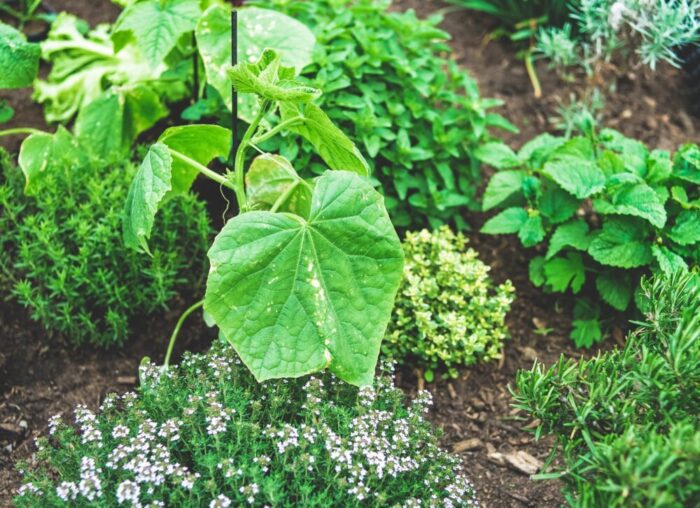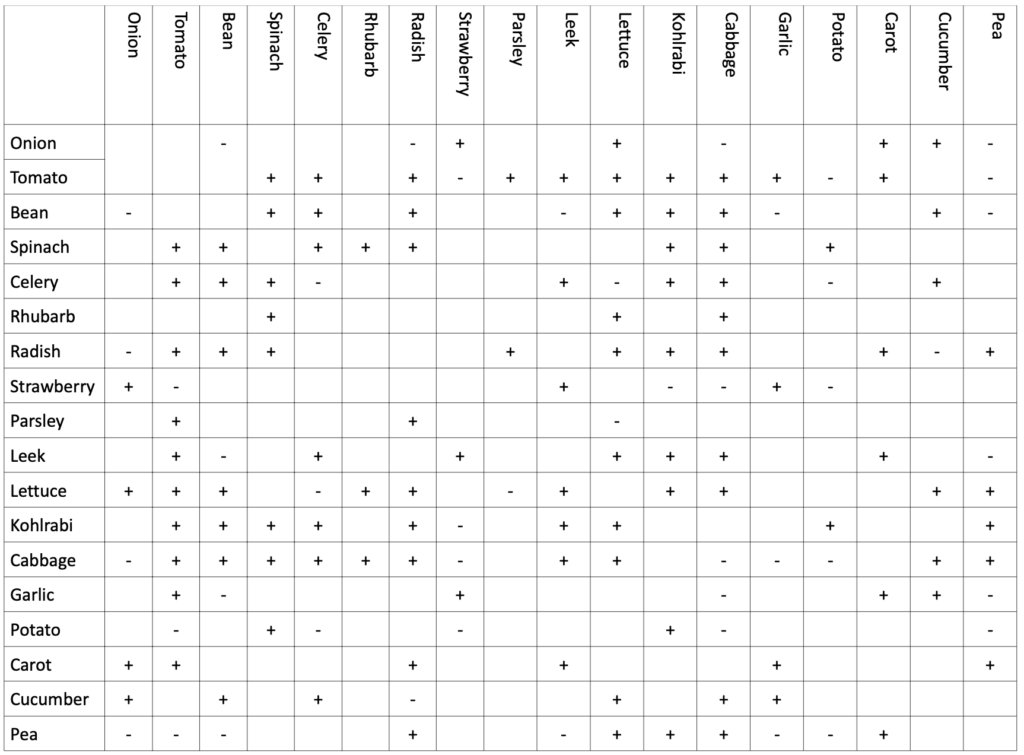
After having obtained a raised garden bed new questions may pop up in your mind like for example: Which plants are the most suited ones? Which plants can be combined? How can the output be maximized? This blog article will give advice and provide some basic information.
Monoculture vs. companion planting
That’s the first question you should ask yourself.
As the name already tells a monoculture is limited to one sort of plant. That makes life easy regarding water and nutrients. And if you favour e.g. tomatos, strawberries or peppers its nice to just cultivate this special plant. A great disadvantage is that if there is any problem like a disease, snails, aphids, fungi etc. it can happen that all the plants are ruined and that no harvest is possible. If you prefer different plants or want to gain experience then choose companion planting. Different plants are combined in one raised bed. You have to be more careful about planting distances and good and bad neighbours but it’s worth trying. It’s a natural form of crop protection (compared to the application of chemicals). The following passages will help you.
Good and bad neighbours
Yes, plants can get in trouble with each other or be best friends. An example: Legumes live in a symbiosis with nitrogen-fixing bacteria. Cabbage plants emit a phytochemical (some kind of mustard oil) over their roots. So when these plants are combined in one bed the phytochemical harms the nitrogen-fixing bacteria.
The table shows good (+), bad (-) and neutral ( ) neighbours. Combine good neighbours of any kind but avoid bad neighbourhood.

Different plant habits
Combine low plants with high ones and small plants with big ones.
Most beans grow up to the sky and stay small. Celery needs a lot of space for its big tuber, beans don’t. The spinach leaves need a lot of horizontal space. But if they are cultivated as baby leaves spinach is a great fill-in. So, the space of the raised bed is optimally used if the three are combined: Beans stay small and grow up, celery needs space for its tuber but stays compact and spinach can be used as a fill-in or is alternated with celery.
Background, foreground planting
Be careful that plants don’t shadow each other. This depends on the cardinal directions. High plants are put in the north/background of a bed whereas low plants are put in the south/foreground. This guarantees enough sun for everyone.
Plant the beans in the background so that they don’t shadow celery and spinach. Celery and spinach can be alternated or second row celery and third row spinach.
Fast growing plants in combination with long-term cultivation
Combining fast and slow growing plants maximizes the output of a small bed.
In our example celery needs 5 months until it can be harvested, beans need 10 weeks and spinach 6 – 8 weeks. Spinach can be regarded as fast growing especially if it’s cultivated as baby leaves. Celery is slow growing. Look again at the table above. You will see that beans are also friends with radish which is also fast growing. And it’s friends with lettuce. Lettuce is not fast growing but can be cultivated as baby leaves and then it’s fast growing.
That gives an idea how to combine the TUmatos
Add some spinach, lettuce (baby leaves) and radish for a fast first harvest. And maybe some basil which shadows the soil and – by the way – is delicious in combination with tomatos. But please, don’t combine them with potatos. That’s the worst thing you can do as potatos get Phytophthora infestans which also infects tomatos.
Bee food
Here some ideas for people who want to feed bees:
The flowers of beans and peas are a food source for bees. You can also plant broccoli and let it flourish (but then you can’t harvest it). Jerusalem artichoke (German: Topinambur) is also a possibility. It looks like a sunflower and the roots are eatable. Or just plant sunflowers, rosemary, sage, oregano, majoram.
In some shops you can find seeds called „Bienenweide“ or „Bienenbüffet“. These plants and flowers don’t need much water and they prefer soils poor in nutrients.
Last but not least: Have fun! Trial and error is the best way to gain experiences. And for all the people who are overwhelmed by so much information: Don’t worry. Take it easy and do a monoculture or just take two different plants. That’s enough for the beginning. 😉
Written by Katharina Joachimsmeyer
References:
Photo by Markus Spiske on Unsplash
https://www.mein-schoener-garten.de/gartenpraxis/nutzgaerten/mischkultur-erdbeeren-52273 SGD Fernlehrgang „Gartengestaltung“, Heft GAR12 Nutzgarten
https://www.plantura.garden/gemuese/tomaten/mischkultur-bei-tomaten


